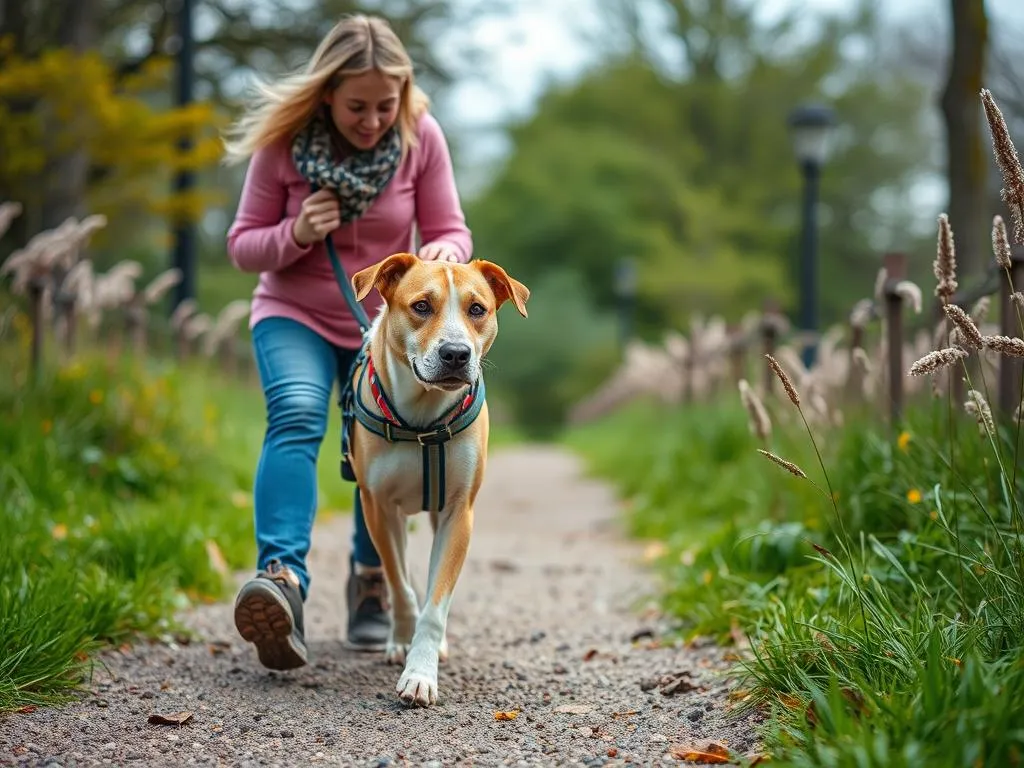
Walking your dog is not just a daily routine; it’s an essential part of their physical and mental well-being. However, many dog owners encounter various challenges during walks, which can turn this joyful activity into a stressful experience. From pulling on the leash to aggression towards other dogs, the problems can be overwhelming. This article aims to provide effective dog walking problems solutions that can help you and your furry friend enjoy your time together.
Understanding Dog Walking Problems
Reasons for Dog Walking Issues
A variety of factors can contribute to dog walking problems. Understanding these reasons can help in finding the right solutions:
- Lack of Training: Many dogs haven’t received proper leash training, leading to pulling, jumping, and other undesirable behaviors.
- Environmental Factors: Distractions such as other animals, people, or even noises can make it challenging for your dog to focus during walks.
- Behavioral Issues: Dogs may exhibit anxiety, fear, or aggression, which can complicate the walking experience.
Common Dog Walking Problems
Identifying the specific issues you face while walking your dog is crucial in addressing them effectively. Here are some common dog walking problems:
- Pulling on the Leash: This is one of the most frequent challenges dog owners encounter.
- Distraction from Other Animals or People: Dogs may become overly excited or distracted by their surroundings.
- Aggression Towards Other Dogs or People: This can stem from fear, territorial instincts, or lack of socialization.
- Refusal to Walk or Stubbornness: Some dogs may simply refuse to walk or seem unmotivated.
- Excessive Barking: Barking can be a way for dogs to express excitement, fear, or frustration.
Solutions for Common Dog Walking Problems
Pulling on the Leash
Training Techniques: One of the most effective ways to stop your dog from pulling is through proper training. Techniques such as positive reinforcement and the stop-and-go method can be quite effective. When your dog pulls, stop walking until they return to your side, then reward them for walking calmly.
Recommended Equipment: Consider using a no-pull harness or a head collar. These tools can help control pulling and make walks more enjoyable for both you and your dog.
Distraction from Surroundings
Establishing Focus Commands: Teaching your dog commands like “leave it” or “look at me” can help redirect their attention away from distractions. Practice these commands in a controlled environment before applying them on walks.
Tips for Reducing Distractions: Choose quieter routes for walks, especially during the initial training phase. Gradually introduce your dog to busier environments to help them acclimate.
Aggression Towards Other Dogs or People
Understanding Triggers: Pay attention to your dog’s body language to identify what triggers their aggression. This awareness can help in managing their behavior more effectively.
Techniques for Desensitization: Gradual exposure to the triggers that cause aggression, combined with counter-conditioning (associating the trigger with positive experiences), can be beneficial. For serious cases, consulting a professional behaviorist may be necessary.
Refusal to Walk or Stubbornness
Identifying Underlying Issues: Sometimes, refusal to walk can be linked to health problems or fear. If your dog suddenly becomes stubborn, a visit to the vet might be warranted to rule out physical issues.
Encouraging Motivation: Use treats or favorite toys to motivate your dog. Start with short walks and gradually increase the distance as they become more comfortable.
Excessive Barking
Understanding the Reasons: Barking can signify excitement, fear, or even frustration. Identifying the cause will help you address it effectively.
Training Methods to Reduce Barking: Implement command training to teach your dog to be quiet on cue. Distraction techniques, such as redirecting their attention with toys or treats, can also minimize excessive barking.
Preventive Measures to Avoid Walking Problems
Proper Training Before Walking
Basic Obedience Commands: Ensure your dog knows essential commands like sit, stay, and heel. These will provide a solid foundation for more advanced skills.
Importance of Socialization: Regularly exposing your dog to different environments, people, and other animals helps them become well-adjusted and reduces anxiety during walks.
Choosing the Right Equipment
Leash Options and Their Benefits: A sturdy leash is essential for control. Retractable leashes can be useful, but they may not be the best choice for training purposes.
Harnesses vs. Collars: A harness can be a safer option for dogs that pull, as it distributes pressure more evenly across their body. Collars can be used for trained dogs that walk calmly.
Establishing a Routine
Consistency in Walking Times and Routes: Dogs thrive on routine. Consistent walking times help set expectations and create a sense of security.
Gradual Increases in Walking Distance: Start with shorter walks and gradually increase the distance and duration. This helps build stamina and confidence in your dog.
Creating a Positive Walking Experience
Making Walks Enjoyable for Your Dog
Incorporating Playtime and Exploration: Allow time for your dog to sniff and explore their surroundings. This not only keeps them engaged but also promotes mental stimulation.
Using Positive Reinforcement
Rewards for Good Behavior: Bring treats along and reward your dog for walking nicely on the leash or responding to commands. This reinforces positive behavior.
Building a Bond Through Shared Experiences: Enjoying walks together can strengthen your relationship with your dog, creating a bond that enhances their overall behavior.
When to Seek Professional Help
Identifying Signs for Professional Intervention
If you notice persistent issues despite your efforts, it might be time to seek help. Signs include uncontrolled aggression, persistent stubbornness, or anxiety that affects your dog’s quality of life.
Types of Professionals to Consider
Trainers: A professional trainer can offer personalized strategies tailored to your dog’s specific issues.
Veterinary Behaviorists: For complex behavioral problems, a veterinary behaviorist can provide insights and treatment options.
Benefits of Group Training Classes
Group classes can provide valuable socialization opportunities for your dog. They also offer an interactive learning environment where you can learn from other dog owners’ experiences.
Conclusion
Addressing dog walking problems solutions can transform your daily walks into enjoyable experiences for both you and your dog. By understanding the root causes of these issues and implementing effective strategies, you can foster a more harmonious relationship with your furry friend. Patience and consistency are key; over time, you’ll see improvements that lead to a happier pet-owner dynamic.
FAQs
What should I do if my dog pulls on the leash?
Implement training techniques like the stop-and-go method and consider using a no-pull harness.
How can I reduce my dog’s barking during walks?
Identify the reason for barking and use command training and distraction techniques to minimize it.
What if my dog refuses to walk?
Check for potential health issues, and try motivating them with treats or toys. Gradual exposure to new environments can also help.
When should I seek professional help for my dog?
If you notice persistent behavioral issues that you can’t manage, consider consulting a trainer or behaviorist for assistance.









